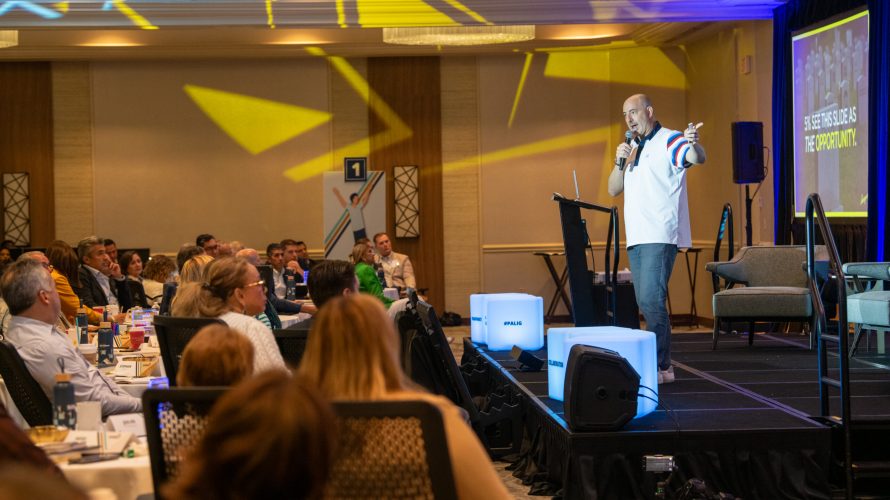Fifty-two percent of the Fortune 500 companies from the year 2000 are now extinct. That’s not a typo. In less than two decades, more than half of the brands that were on the Fortune 500 list in 2000 no longer exist.
Fifty years ago, the life expectancy of a Fortune 500 brand was 75 years; now it’s less than 15. It has been predicted that an estimated 9,000 companies could find their way on and off the Fortune 500 list over the next six decades.
The Business Apocalypse has caused the demise of many once-thriving corporations. Companies we used to adore like Toys “R” Us, Tower Records, Pets.com, Blockbuster, and Kodak are no more. So what’s causing all this? And how can your company avoid this grave danger? I believe it starts by first accepting the Four Truths of the Business Apocalypse:
1. Companies are perishing at an alarming rate.
2. We are afraid of change.
3. What got you here won’t keep you here.
4. You need time, but you don’t have time.
These truths are daunting, but instead of suppressing them, it’s time to acknowledge them and take action. We must work closely with our teams to shift their mentalities from “There’s no time like the present” to “There’s no time but the present.” When you do, you can decrease your company’s chances of falling to one of these statistics. But you must have the courage to do so. Let’s start by unpacking the first truth.
Truth #1: Companies are perishing at an alarming rate
A recent white paper released by the Boston Consulting Group reported that public companies of all shapes, sizes, and sectors are going out of business at an alarming rate. Assessing 35,000 listed corporations since 1950, the study noted, “Public companies have a shorter life span now than ever.”5 To make matters worse, as quoted in the same study, “Businesses aren’t just dying off sooner. They’re also more likely to perish at any point in time.” This is the dire truth of business today. Big business, small business, brick-and-mortar retail stores, and apparel companies are all vulnerable. No business is safe. But why is this? The reason for this proliferation of business casualties can be broken down into external and internal factors.
External Factors
Companies have more competition, fight more noise, and have less control than in the good old days. Customers have more access to products, but they devote less time and are less swayed by brands and by advertising than ever before. If there is a silver lining here, it is that a majority of all businesses are dealing with these same external factors, which brings us to the organizational health headaches brought forth from a slew of complicated internal factors.
Internal Factors
Many leadership teams would like nothing more than to shortcut the process, professing change to the external world without truly committing to the hard work it takes to internally change an organization. Simply put, internal change is hard, and it’s made even more difficult because of the speed bumps of interoffice politics and mass hierarchy. Changing a company’s culture takes time and effort because there are so many different personalities involved.
Truth #2: We are afraid of change
It can be quite unnerving when you have consistently generated big revenue doing things a certain way, but this way will no longer suffice in the future. Indeed, change is hard and almost insurmountable when you don’t think you need to change. We must be willing to recognize the need for change, and instead of being afraid of it, we should embrace it, despite the stories our head is telling us.
Truth #3: What got you here won’t keep you here
Change can be quite expensive and difficult, and it doesn’t help that there’s no guarantee what you do next will work. However, not changing isn’t going to help you prepare or evolve for a drastically different tomorrow. Once you’ve made your way to the top, you must always be looking at ways to evolve your company to stay relevant and in demand.
Truth #4: You need time, but you don’t have time
Externally, your business is feeling the pressures of more competition and less control. Internally, your employees are wired to be a bit too self-serving, proud, or skeptical. Combine it all together, and you find yourself and your company stuck. This stasis means you can’t change at the rate you need to. Indecisiveness and uncertainty lead to slow decision making, and this can be your kryptonite: You must be urgent in addressing the changes that your company needs.
Return on Courage
Courage Brands aren’t waiting around to see if they’ll become part of the Business Apocalypse. Instead, they take action to relevantly propel themselves into tomorrow. Most of all, Courage Brands don’t just weather whatever circumstances may come their way gracefully. Courage Brands shrink fear and, ultimately, transform. Courage Brands don’t just survive. Courage Brands rise, thrive, and win. Most businesses are properly focused on return on investment. Courage Brands have a high Return on Courage. How can you recognize when your brand is moving down the right path to delivering a Return on Courage? Read on: Return on Courage Helps Companies Maximize Their Return on Investment.


